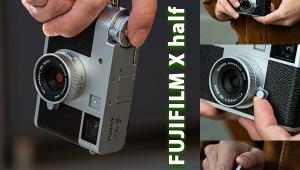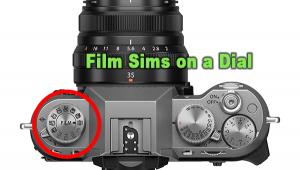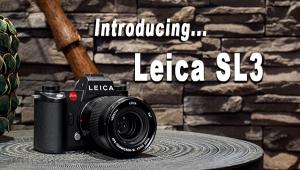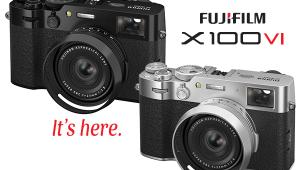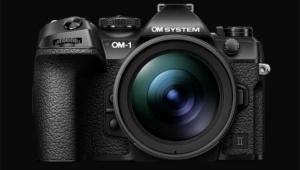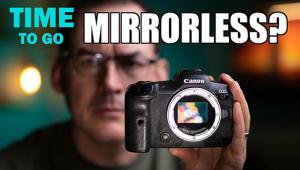5 Reasons Mirrorless Telephoto Lenses Are Great for Photographing Wildlife & Nature
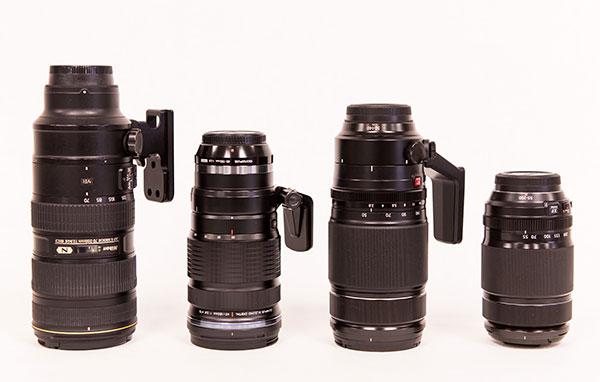
Telephotos have always been bread-and-butter lenses for photographers shooting everything from commercial and sports to wildlife and landscapes. The ability to separate a subject against its background or pull in a distant scene has made telephoto lenses a staple in nearly every camera bag around the world.
While fixed focal length lenses are typically sharper, a good telephoto zoom in the range of 70-200mm gives photographers the ability to create multiple compositions while not having to move or change lenses. Until recently, high-quality telephoto lenses have been limited to the realm of full-sized DSLR cameras. But recent advancements in mirrorless cameras and lenses has narrowed this gap to the point that many photographers are looking toward mirrorless systems as a way to shave weight and save money over comparable DSLR systems.
Here are five reasons why I often turn to my mirrorless telephotos lenses when capturing wildlife and nature.

1. Many Focal Lengths in One Lens
While moving camera positions is often the quickest way to “zoom” with a fixed focal length lens, unfortunately this is less than ideal when dealing with obstacles and even more difficult when the subject moves unpredictably. Imagine shooting bald eagles in Alaska where the photographer knows the action is coming, but doesn’t know where it is coming from. The ability to change focal lengths quickly with a telephoto zoom and adapt to unpredictable conditions dramatically increases the number of potential images made during a single shooting session.

2. Tracking Action
Another plus of a telephoto zoom is the ability to change focal length while tracking action that is getting closer or farther from the photographer during a single sequence of images. Often when I am shooting adventure sports or wildlife I find myself locking onto a subject and zooming as I track my subject moving throughout the frame. Most often this happens as my subject starts far from my camera position, but as my subject approaches I am able to keep it within the frame by zooming out.

3. Saving Your Back (Weight & Size Savings)
One of their biggest advantages of mirrorless systems is that by removing the mirror from a traditional DSLR, lenses can be placed closer to the sensor. This combined with the fact that many of the newer mirrorless systems are using smaller sensors that do not need to collect as large an area of light, is making it possible to reduce the physical size of telephoto zooms dramatically.
While the image quality out of all the current systems is quite stunning, the highest resolution comes from Sony’s A7 camera system, which uses different full frame sensors at up to 36MP. This resolution is impressive and the bodies are small, but it comes with the cost of lenses needing to focus light on a larger sensor and thus Sony lenses are not much smaller than comparable full frame DSLR lenses. On the flipside, Olympus and Panasonic have developed the Micro Four Thirds platform, which has a much smaller sensor. While the sensor isn’t a 36MP chip like the Sony A7 has, it is still great and comes with a 2x crop factor, which allows for much smaller lenses.
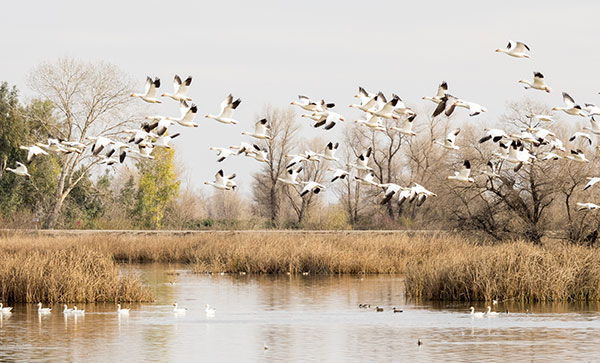
4. Helps You Get in Close (The Crop Factor)
Wildlife or sports photographers find this 2x crop factor to be a real plus, because it means much greater reach from smaller lenses. For example the new Olympus 40-150mm f/2.8 lens is the equivalent of a full frame 80-300mm f/2.8 at a fraction of the cost and weight of a similar Nikon or Canon 300mm f/2.8 lens. With baggage restrictions on airline travel increasing each year, this means a wildlife worthy system can fit into a large laptop bag rather than that heavy roller or backpack.

5. Cost savings
Another huge advantage mirrorless systems is their price compared to similar DSLR systems. By removing the entire mirror assembly from the bodies and reducing the amount of glass needed in lenses, manufacturers are able to significantly reduce their production costs and pass this savings on to consumers. As a result, for the price of some high-end DSLR lenses, photographers can buy an entire professional quality mirrorless system from wide angle to telephoto.

Mirrorless Lens Buying Advice
While each system has its advantages, before jumping into a mirrorless camera system you should decide if resolution, or physical size is most important. Today’s mirrorless telephoto lenses leave nothing to be desired in terms of build or image quality comparison to their larger DSLR cousins, but you may find that the slightly slower auto focus of mirrorless cameras leaves you hanging when shooting action.
For fast sports and birds in flight, professional DSLRs still deliver higher percentages of in focus images, but for everything else the current generation of mirroless bodies is more than adequate. In fact some of the newer focus peaking abilities offered by electronic viewfinders may be preferred over traditional optical focusing for some users.
For most photographers, the cost and weight savings over traditional DSLRs, makes mirrorless systems worth a serious look before buying your next camera, and the autofocus gap will likely close quickly as mirrorless companies see it as the fastest way to gain greater market over DSLRs in the next few years.

Our Favorite Mirrorless Telephoto Lenses
Olympus 40-150mm f/2.8 (80-300mm full frame equivalent) This is an exceptional lens that offers photographers a fast aperture zoom in a very small package. Being just over six inches long and weighing less than two pounds, it saves more than $4,000 and four pounds over a comparable DSLR 300mm f/2.8 lens. Being amazingly sharp and well built, the Olympus 40-150mm f/2.8 lens allows photographers to carry a professionally built fast zoom in a large jacket pocket while they hike or explore the great cities of the world.
Olympus 300mm f/4 (600mm full frame equivalent) While this lens is still in the production stages, if it lives up to the quality of the other professional level Olympus lenses, it will be a game changer in terms of long lenses. The lens will be the full frame equivalent of a 600mm f/4 but similar in size and weight to a DSLR 70-200mm f/2.8. While normally such large telephotos cost as much as $10,000 and weigh more than 10 pounds, the savings and portability of this new lens will likely change the way all wildlife photographers approach their subjects. Hikers and backpackers will suddenly be able to do serious wildlife work miles from the car where a traditional 600mm lens would have been too heavy to consider carrying.
Fujifilm 50-140mm f/2.8 (76-210mm full frame equivalent) This top notch pro quality lens offers a great range and sold build at a fast fixed aperture. Paired with the amazing Fujifilm X-T1 body, the Fujifilm 50-140mm f/2.8 produces stunning images from a small package. With a very solid removable tripod collar and notched lens hood that allows for adjusting filters without removing the hood, this lens is clearly destined to become the workhorse of the professional Fujifilm line.
Fujifilm 55-200mm f/3.5-4.8 (84-305mm full frame equivalent) While the 50-140 is clearly built with the working pro in mind, because of its fixed f/2.8 aperture it does end up being too large to be considered a compact travel lens. The Fujifilm 55-200mm f/3.5-4.8, on the other hand, hits the sweet spot in terms of build quality with a minimal size. The variable aperture lens produces stunning images but will fit in a large pocket, making it a great travel or backcountry telephoto.
Sony 70-200mm f/4 FE lens This full frame lens is well built and offers a very versatile range for the Sony A7 system. While not much smaller than similar DSLR lenses, it does allow users to bring home amazingly high resolution files using Sony’s flagship 36MP A7R body. So if small size is less important than resolution and you do not need a fast f/2.8 aperture, this is the lens for you.

